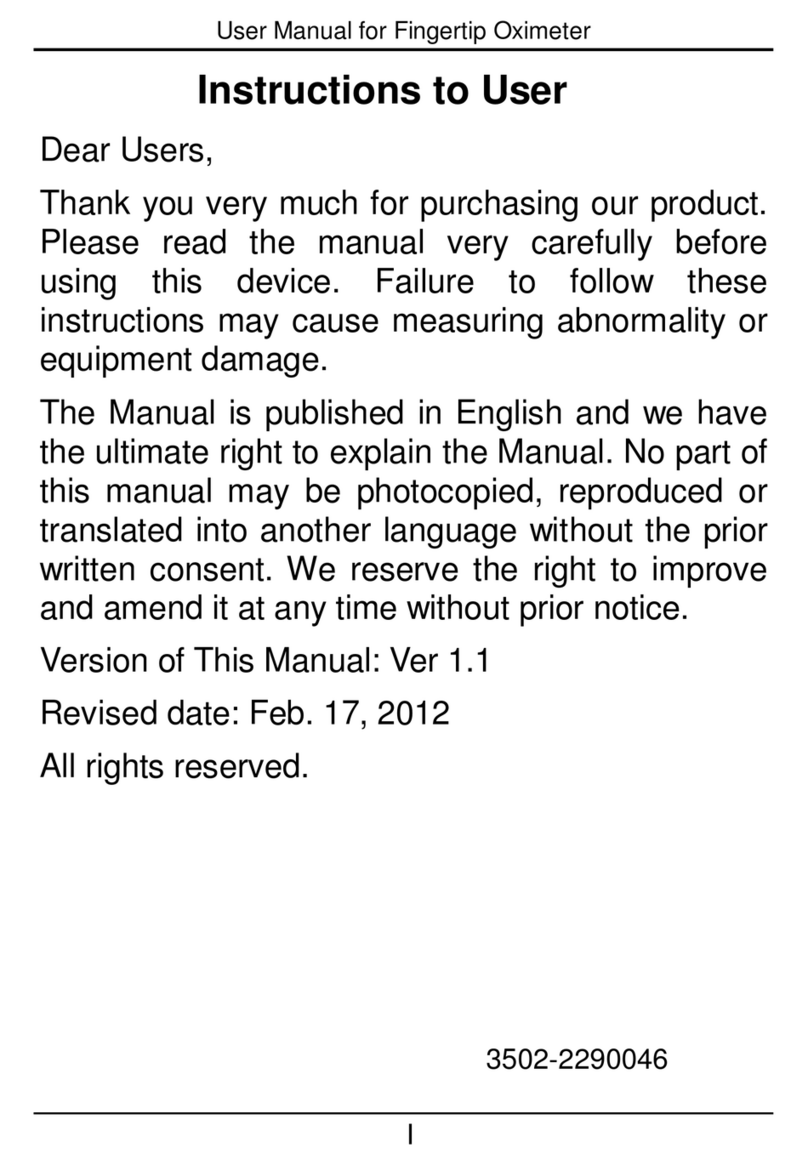User Manual for PC-80D Easy ECG Monitor
IV
5 Waveform Review..................................................................................................................................................................... 12
5.1 Record list ........................................................................................................................................................................... 12
5.2 Waveform Review............................................................................................................................................................... 13
6 Data Management.................................................................................................................................................................... 15
6.1 Storage status....................................................................................................................................................................... 15
6.2 Delete ID............................................................................................................................................................................. 15
6.3 Delete all ............................................................................................................................................................................. 16
6.4 Upload Data......................................................................................................................................................................... 16
7 Measurement option setting..................................................................................................................................................... 17
7.1Creating new ID ................................................................................................................................................................... 18
8 System Setup............................................................................................................................................................................. 19
8.1 Sound setting....................................................................................................................................................................... 19
8.2 Brightness Setting................................................................................................................................................................ 19
8.3 Time/Date Setting................................................................................................................................................................ 19
8.4Auto power off ..................................................................................................................................................................... 20
8.5 Power saving....................................................................................................................................................................... 20
8.6 Language............................................................................................................................................................................. 20
9 Help........................................................................................................................................................................................... 21
10 Technical Specifications ......................................................................................................................................................... 22
10.1 ECG measurement............................................................................................................................................................. 22
10.2 Power supply..................................................................................................................................................................... 22
10.3 Classification..................................................................................................................................................................... 23




























